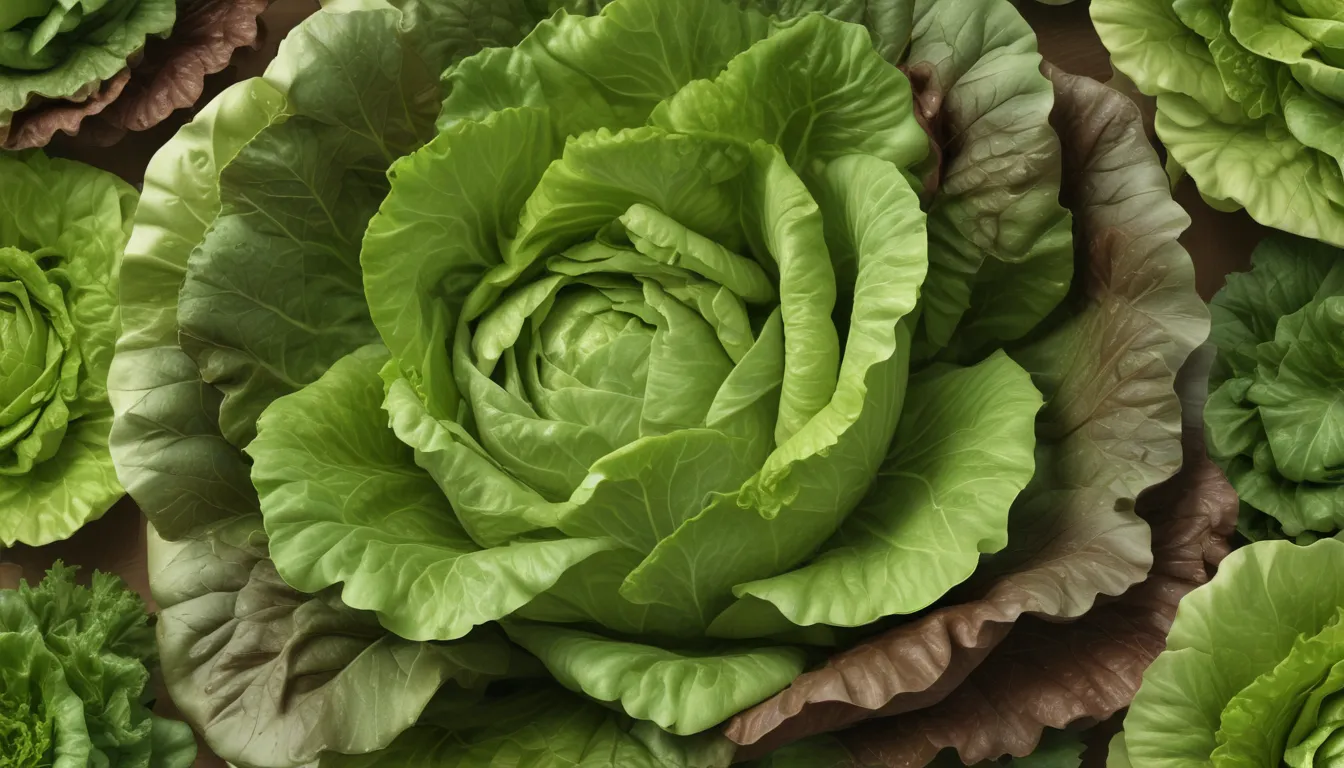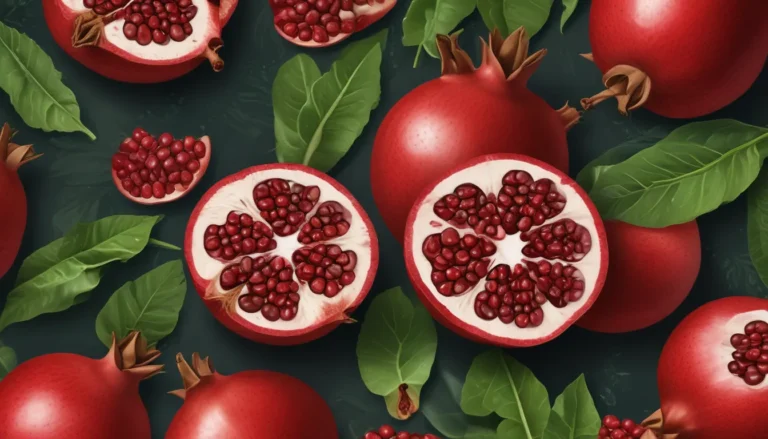The pictures in our articles might not always show exactly what the text is talking about. We use these images to make the article more interesting and eye-catching. They are there to add to the text, but not to replace it or show every detail.
Welcome to the fascinating world of lettuce! This versatile leafy green has been a culinary favorite for centuries, adding freshness and nutrition to our meals. In this article, we will explore 15 intriguing facts about lettuce that will enhance your appreciation for this beloved green. Get ready to dive into the nutritional wonders of lettuce!
The Rich Variety of Lettuce
Lettuce comes in a variety of types, each with its own unique characteristics. From the delicate and mild Butterhead lettuce to the crisp and crunchy Romaine lettuce, there's a lettuce variety to suit every taste bud. Other popular varieties include Iceberg, Leaf, and Cos lettuce, each offering a different texture and flavor profile.
A Historic Journey
Lettuce has a long and storied history, dating back to ancient Egypt and Greece. It was valued for its cooling properties and was even considered a sacred plant. The Egyptians offered lettuce to the god Min, while the Greeks associated it with the goddess Aphrodite.
The Nutritional Powerhouse
Despite its low-calorie content, lettuce is a nutritional powerhouse. It is rich in essential vitamins and minerals, including vitamin K, vitamin A, folate, and potassium. Lettuce is also a great source of dietary fiber, promoting healthy digestion and gut health.
Hydrate with Lettuce
With its high water content, lettuce is an excellent hydrating food. Adding lettuce to your meals can contribute to your daily water intake and help keep you properly hydrated throughout the day.
Cultivate Your Own Lettuce Garden
Lettuce is relatively easy to grow, making it a popular choice for home gardeners. Whether you have indoor or outdoor space, many lettuce varieties are suitable for cultivation. You can even grow lettuce in containers, making it accessible to all gardening enthusiasts.
A Splash of Color
While green lettuce is the most common, there are vibrant red and purple varieties available. Red Leaf and Lollo Rosso lettuce add a colorful pop to salads and dishes, making them visually appealing and appetizing.
The Allure of Leaf Lettuce
Leaf lettuce is known for its loose, delicate leaves and mild taste. With leaves in various shapes, from smooth to frilly, leaf lettuce offers a visual delight. It's often used as the base for gourmet salads, adding both flavor and texture to dishes.
Enjoy the Crunch: Iceberg Lettuce
Famous for its crisp texture and refreshing taste, Iceberg lettuce is a favorite for adding crunch to sandwiches and burgers. While lower in some nutrients compared to other varieties, Iceberg lettuce provides hydration and a satisfying crunch that elevates your meals.
Romaine: A Nutrient Powerhouse
Romaine lettuce is a nutrient-dense favorite with its crunchy stems and robust flavor. Packed with vitamins A, C, and K, Romaine lettuce is often used in salads and wraps, adding both flavor and nutrition to your meals.
Lettuce Beyond the Salad Bowl
While lettuce is commonly used in salads, it has versatile culinary applications. Lettuce leaves can be used as wraps for fillings, added to stir-fries for a crispy element, or even grilled for a unique flavor profile.
Storing Lettuce Properly
To keep lettuce fresh and crisp, it's crucial to store it correctly. Store lettuce in a perforated bag or container in the refrigerator, allowing for airflow and preventing moisture buildup that can spoil the leaves.
The Harmony of Flavors
Some lettuce varieties, like certain types of Romaine lettuce, can have a slightly bitter taste. To balance this bitterness, combine lettuce with sweeter ingredients or use tangy dressings to enhance the overall flavor profile of your dishes.
Embrace the Health Benefits
Consuming lettuce as part of a balanced diet offers numerous health benefits. It provides essential nutrients, promotes hydration, supports healthy digestion, and contributes to overall well-being. With its nutritional profile, lettuce is a valuable addition to any diet.
Sustainable Farming Practices
Lettuce is often grown using sustainable farming methods, such as hydroponics and vertical farming. These practices reduce water usage and allow lettuce to be cultivated in urban areas, minimizing the environmental footprint of traditional agriculture.
Lettuce: More Than Just Food
Beyond its culinary uses, lettuce can be a soothing remedy for skin irritations like sunburns or insect bites. The cooling properties of lettuce can help alleviate discomfort and promote healing, showcasing its versatility beyond the kitchen.
Elevate Your Culinary Creations with Lettuce
Lettuce is not just a salad staple; it's a nutritional powerhouse and a versatile ingredient that adds freshness and texture to various dishes. By exploring different varieties and understanding their benefits, you can elevate your culinary creations while reaping the health rewards of this leafy green. So, embrace the vibrant world of lettuce and enjoy its nourishing wonders!
Frequently Asked Questions (FAQs)
Can lettuce be frozen?
Lettuce does not freeze well due to its high water content and delicate structure. Freezing can cause the leaves to become wilted and mushy.
Are there any safety concerns with lettuce consumption?
Lettuce can sometimes be associated with foodborne illnesses like E. coli contamination. It's essential to wash lettuce thoroughly before consumption and follow food safety guidelines to minimize the risk of contamination.
Is organic lettuce worth it?
Organic lettuce is grown without synthetic pesticides or fertilizers, making it a popular choice for those concerned about environmental impact and pesticide exposure. However, conventionally grown lettuce is still safe to consume and offers nutritional benefits.
Can lettuce be cooked?
While lettuce is typically consumed raw, some varieties, like Romaine, can withstand light cooking. Grilling or sautéing lettuce briefly can add a unique flavor and texture to dishes.
How can I incorporate lettuce into my meals if I don’t enjoy salads?
If salads aren't your favorite, try using lettuce leaves as wraps for fillings, adding them to sandwiches, stir-fries, or blending them into smoothies for an extra nutritional boost.
Explore the World of Lettuce with Confidence!
Our commitment to providing reliable and engaging content ensures that you have access to accurate and diverse information about lettuce. Each fact shared is contributed by real users like you, guaranteeing a wealth of insights for you to explore. Trust in our dedication to quality and authenticity as you delve into the world of lettuce, enriching your knowledge and culinary experiences.






